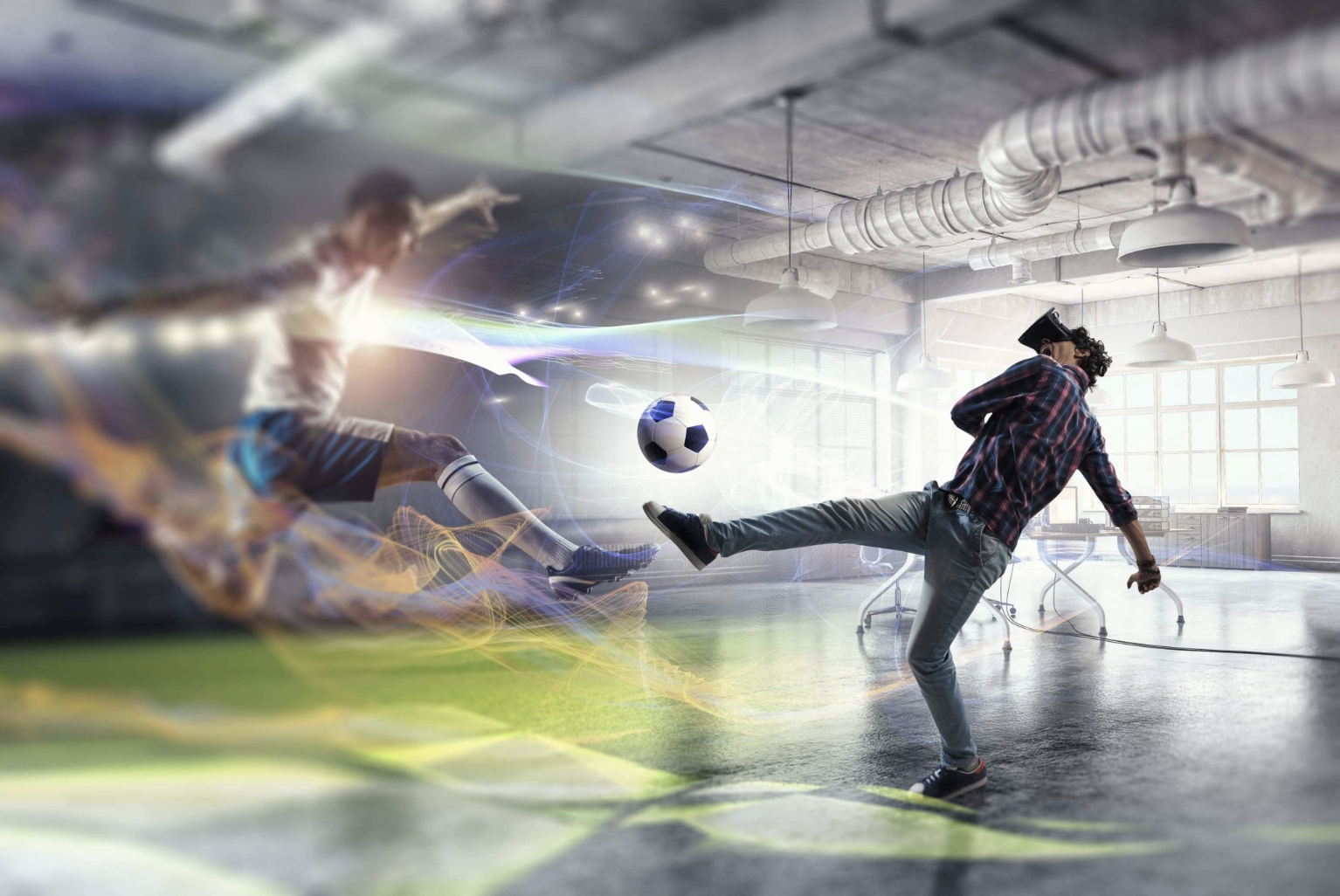Adoption Of AR / VR In the Sports industry
Over the past year, we've seen some significant changes in how we enjoy sports, all thanks to augmented reality (AR), virtual reality (VR) and...
Tonic3 develops and executes strategies that drive profit through Digital Transformation. Practically that means we are built to help clients hone the right strategy, implement the right technology, and build the right long-term capabilities to deliver lasting transformation.
Industries
We believe that effective technology helps people succeed in their daily lives. So we help our clients engineer useful technology for their clients, partners, and employees. That translates to every major industry, but over the years we’ve developed several core areas of expertise.
5 min read
 Mialou Stevens
:
Oct 21, 2023 12:30:00 PM
Mialou Stevens
:
Oct 21, 2023 12:30:00 PM

Augmented Reality vs Virtual Reality: the two distinct but related technologies that have gained significant prominence in recent years.
Augmented Reality - AR is a technology that overlays digital information, such as images, videos, or 3D objects, onto the real world. People can use smartphones or AR glasses to see and interact with the real world and digital information simultaneously. These devices enable users to view and engage with both physical surroundings and virtual content simultaneously.
AR enhances our visual perception by integrating computer-generated elements into our real-world view.
Augmented Reality (AR) enhances our perception by integrating computer-generated elements into the real world. It provides live directions and relevant information for navigation.
It merges digital and physical aspects in gaming. It also provides interactive learning opportunities for training and education. AR enriches various aspects of our lives by seamlessly merging the real and digital worlds.
Virtual Reality - (VR) is a technology that takes users to a computer-generated world using a VR headset. As you this, you may think to yourself, how does virtual reality work? When people use VR devices, they enter a virtual world and disconnect from their real surroundings. VR creates an atmosphere where users feel like they are actually in a different, sometimes imaginary, place.
People extensively use VR for gaming, simulations, virtual tours, and even medical training to create highly immersive and interactive experiences. AR and VR could change how we interact with the world and get information, giving us new and amazing experiences.
Sports industry has seen a tech revolution, changing how we enjoy and participate in sports. AR and VR are changing the game, providing many benefits beyond just entertainment. We use immersive technologies to improve player performance, engage fans, and enhance the sports experience.
AR and VR are invaluable tools in the world of sports training and performance. Athletes can use VR to simulate game situations and improve their decision-making abilities. Football players can practice reading defenses.
Virtual Reality (VR) stands to change the sports industry by offering a multitude of advantages. Athletes can use virtual reality (VR) to enhance their training.
They can simulate game situations, improve their abilities, and make better decisions. You can do all this in a secure setting. Moreover, VR proves invaluable in injury prevention and rehabilitation, providing engaging virtual therapy exercises.
Coaches and scouts can utilize VR to analyze player performance from multiple angles and make informed strategic decisions. Fans can feel like they're at the stadium with VR, giving them the same excitement as there in person.
Furthermore, VR is transforming sports simulation and gaming, and organizations are integrating it into training programs for officials. This technology improves performance, engages fans, and enhances the sports experience, making it a game-changer for the industry's future.
Basketball players can work on shooting under pressure. Golfers can refine their swing within a virtual space. This type of practice reduces the risk of injury and accelerates skill development.
Augmented Reality (AR), on the other hand, can provide real-time information and statistics to athletes during training and competitions. Picture a cyclist seeing important information on their AR visor, or a tennis player instantly knowing where their serve went. Such features enable athletes to make quick adjustments and enhance their performance.
Another significant benefit of AR in sports is its potential to transform how coaches and trainers interact with athletes. AR can help athletes improve by giving them instant feedback and analysis on their performance during games. A football quarterback can quickly learn about the opposing team's defense or a golfer can get advice on their swing posture.
Coaches can use augmented reality today to show strategies and tactics, helping players coordinate better on the field. When athletes and coaches work together, it improves their skills and decision-making abilities in games. In return, all these capabilities can ultimately lead to better team performance.
AR and VR have made sports more exciting for fans by providing immersive and interactive experiences. AR and VR have enhanced the excitement of sports for fans through immersive and interactive experiences. With VR, spectators can feel as if they are physically present, whether it's at a basketball game or a soccer match. This level of immersion keeps fans engaged and excited.
AR has changed how fans interact with sports content, making it more interactive and easily accessible. Developers can create mobile apps that display live stats to accomplish this. Additionally, AR filters allow fans to try on their favorite player's jersey through their smartphones.
Moreover, AR and VR technologies have opened new avenues for fan participation and engagement. Virtual reality headsets allow fans to experience sports events as if they were actually on the field or court. Creating immersive and simulated environments.
These headsets create a sense of immersion, making fans feel like they are a part of the game. By wearing these headsets, fans can fully immerse themselves in the virtual reality experience. This technology provides a unique and realistic way for fans to engage with their favorite sports.
Meanwhile, augmented reality apps create an interactive bridge between the physical world and virtual worlds. Fans can engage by use their phones or tablets to scan pictures, posters, or stadium signs. Scanning these items will provide them with additional content such as player highlights, team stats, or exclusive interviews.
Fans increasingly use technology in their experience. This is changing how fans connect with sports and athletes. It is also creating a stronger sense of community and excitement.
Coaches are benefiting from AR and VR as well. Coaches can use VR technology to analyze player performance, enabling them to make informed decisions about strategy and player development. It provides them with adequate education and training that is essential knowledge. They can review game footage from different angles or simulate opposing teams' strategies, which can be a valuable asset in preparation.
AR also assists coaches by providing real-time data and information on their players' performance during a game. Coaches can make more accurate and timely decisions, such as substitutions or strategy adjustments, thanks to this data. Moreover, AR can facilitate communication among coaches and players on the sidelines, improving overall team coordination.
AR and VR technologies have also proven invaluable in the realm of sports medicine and injury prevention. VR-based rehabilitation programs can aid injured athletes in their recovery. They can do physical therapy exercises in a virtual world, which can make it more fun and speed up their recovery.
AR can assess and monitor the physical condition of athletes, reducing the risk of injuries. AR technology helps analyze body movement and walking, finding possible problems before they get worse.
AR and VR are revamping the sports industry in numerous ways. Creating the ultimate user experience. Immersive technologies are changing the game in real life by improving athlete training, performance, and fan engagement.
They help coaches make better choices, prevent injuries, and improve rehabilitation. Creating a more exciting sports experience for everyone. AR and VR advancements will bring more innovation and change to sports, benefiting athletes, coaches, and fans.
As technology improves, the options are endless, and it's an exciting time to see how immersive technologies are changing sports. AR and VR are here to stay, enhancing the sports experience for athletes, coaches, and fans. Welcome to the future of virtual reality.

Over the past year, we've seen some significant changes in how we enjoy sports, all thanks to augmented reality (AR), virtual reality (VR) and...

In the fast-paced world of the pharma industry, managing customer relationships, data, and sales processes efficiently is paramount. Salesforce, a...

Virtual reality (VR) and augmented reality (AR) have increased the spotlight and interest in recent times. The technology is advancing and more...